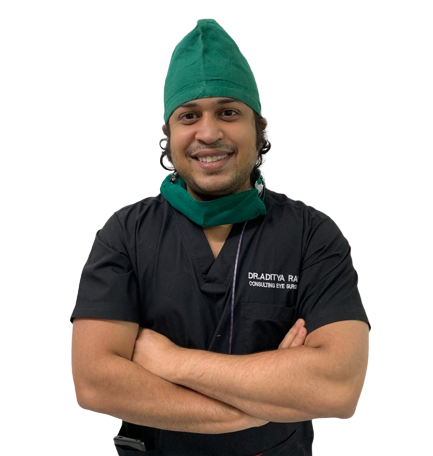Blogs for Cataract
List of articles for Cataract

Eye procedures
At our esteemed eye clinic, we understand the significance of clear vision and its impact on our daily lives. With advancements in medical technology, a wide array of eye procedures have emerged, catering to diverse visual impairments and conditions. Our clinic takes pride in offering a comprehensive range of eye procedures designed to improve vision, restore ocular health, and ultimately enhance the quality of life for our patients. In this article, we will delve into the world of eye procedures, exploring their benefits, applications, and the transformative potential they hold.
Cataract Surgery:
One of the most commonly performed eye procedures at our clinic is cataract surgery. Cataracts cause clouding of the natural lens, resulting in blurry vision and reduced clarity. Our skilled ophthalmologists employ state-of-the-art techniques to remove the cloudy lens and replace it with an artificial intraocular lens (IOL). This outpatient procedure has revolutionised vision correction, enabling patients to regain clear vision and visual acuity.
LASIK (Laser-Assisted in Situ Keratomileusis):
LASIK is a popular refractive surgical procedure that corrects common vision problems such as myopia (nearsightedness), hyperopia (farsightedness), and astigmatism. By reshaping the cornea using a precision laser, LASIK enables light to focus properly onto the retina, resulting in improved vision. This bladeless and painless procedure has transformed the lives of millions, eliminating the need for glasses or contact lenses.
Glaucoma Surgery:
Glaucoma, often referred to as the "silent thief of sight," damages the optic nerve and can lead to irreversible vision loss if left untreated. Our clinic offers various glaucoma procedures, including trabeculectomy, tube shunts, and minimally invasive glaucoma surgery (MIGS). These procedures aim to reduce intraocular pressure and preserve optic nerve function, preventing further vision deterioration.
Corneal Transplant:
For individuals with corneal diseases or corneal scarring, a corneal transplant may be the most viable solution. Our eye clinic specializes in performing full-thickness and partial-thickness corneal transplants, restoring clarity to the front part of the eye and improving overall vision. These procedures can be life-changing, providing patients with the ability to see clearly once again.
Retinal Detachment Surgery:
Retinal detachment is a serious condition that requires prompt surgical intervention. At our clinic, we offer various retinal detachment surgeries, including pneumatic retinopexy, scleral buckling, and vitrectomy. These procedures aim to reattach the detached retina, preventing vision loss and preserving ocular function.
Eye Muscle Surgery:
Eye muscle surgery corrects misalignments of the eyes, such as strabismus (crossed eyes) or nystagmus (involuntary eye movement). Our skilled surgeons perform precise adjustments to the eye muscles, improving eye alignment and enhancing binocular vision. This procedure can significantly enhance the quality of life for both children and adults affected by these conditions.
Conclusion:
The field of ophthalmology has witnessed remarkable advancements, providing individuals with a plethora of eye procedures to address various visual impairments and ocular conditions. At our eye clinic, we offer a wide range of these transformative procedures, ranging from cataract surgery and LASIK to corneal transplants and retinal detachment surgeries. Through these interventions, we strive to improve vision, restore ocular health, and empower individuals to lead fulfilling lives free from the shackles of visual limitations. If you are seeking professional eye care and innovative eye procedures, our clinic stands ready to guide you on your

Cataract Surgery Recovery: What to Expect and How to Prepare
Cataract surgery is a common and extremely effective method for treating cataracts, a disorder that causes clouding of the lens of the eye, resulting in blurred vision. In order to restore vision clarity, the clouded lens is taken out during surgery and replaced with an artificial lens inside the eye. Modern technology has made the treatment minimally invasive and safe. For the majority of patients, cataract surgery has a high success rate and significantly improves visual acuity.To be ready for the procedure and to have realistic targets about the results and recovery time, it is crucial to have a basic understanding of cataract surgery.

Cost of Cataract Surgery Pune
Introduction:
Cataract surgery is a common and highly effective procedure that can significantly improve vision for individuals with cataracts. However, one of the concerns many patients have is the cost associated with this surgery. The cost of cataract surgery can vary depending on several factors, including geographic location, type of surgery, the clinic or hospital chosen, insurance coverage, and additional treatments required. In this article, we will explore these factors and shed light on how they can impact the overall cost of cataract surgery for patients.

Low-intensity ultraviolet A irradiation of the lens capsule to remove lens epithelial cells during cataract surgery: Effectiveness and safety
Raut, Rajeev M. DO∗. Low-intensity ultraviolet A irradiation of the lens capsule to remove lens epithelial cells during cataract surgery: Effectiveness and safety. Journal of Cataract & Refractive Surgery 33(6):p 1025-1032, June 2007. | DOI: 10.1016/j.jcrs.2007.02.026
JSCRS article link
Eyewiki link to capsular phimosis and prevention
To assess the effectiveness and safety of low-intensity ultraviolet A (UVA) irradiation in removing lens epithelial cells (LECs) during cataract surgery and compare them with those of mechanical polishing and no treatment.
PURPOSE:
To assess the effectiveness and safety of low-intensity ultraviolet A (UVA) irradiation in removing lens epithelial cells (LECs) during cataract surgery and compare them with those of mechanical polishing and no treatment.
SETTING:
Eyecove Ophthalmology Clinics, Pune, India.
METHODS:
This prospective randomized double-masked study consisted of preoperative screening of 36 patients, of which 30 met the inclusion criteria and were recruited. The patients had routine cataract surgery. A bean-shaped capsulorhexis was performed. After the nucleus and cortex were removed, the capsular bag was irradiated from inside with low-intensity UVA in 1 group. A second group had mechanical polishing, and a third group was not treated. A small flap of the anterior capsule was removed in each patient. The flap was stained and mounted in a Fuchs-Rosenthal chamber. For estimation of effectiveness, the area of capsule covered with epithelial cells was estimated by examination under a light microscope. One day postoperatively, an examination was performed to assess the safety of each technique.
RESULTS:
The area of the capsule from which the LECs were removed was significantly larger in the UVA-irradiation group than in the mechanical-polishing group (P = .001) and the no-treatment group (P = .001). There was no significant difference between the mechanical-polishing and no-treatment groups (P>.05). The area of the capsule flap that was covered with LECs was significantly less in the UVA-irradiation group than in the mechanical-polishing group (P = .017) and the no-treatment group (P = .001). The mechanical-polishing group and no-treatment group were not significantly different from each other (P>.05). Corneal edema was significantly less in the UVA-irradiation group than in the mechanical-polishing group (P<.001) and no-treatment group (P = .012). No patient in the UVA-irradiation group had postoperative lid edema; 8 patients in each of the other 2 groups had lid edema. The difference was statistically significant (P<.0001). Pupil size was significantly larger in the UVA-irradiation group than in the mechanical-polishing group and no-treatment group; the difference was significant (both P = .0001). There was no significant difference in pupil size in the mechanical-polishing group and no-treatment group. No significant difference was observed between the 3 groups in visual acuity, conjunctival edema, anterior chamber flare, and intraocular pressure.
CONCLUSION:
Ultraviolet A irradiation of the capsular bag was effective and safe in removing LECs from the anterior capsule during cataract surgery.
Cataract surgery pune

Which IOL should I choose for my cataract surgery?
Cataract is a condition in which the clear and transparent natural lens located inside the eye becomes cloudy or opaque. At the time of cataract surgery this cloudy natural lens is removed and replaced with an artificial IntraOcular Lens or IOL. Cataract surgery not only improves the vision but also opens up the possibility of reducing dependency on glasses. There are various types of IOLs available with different properties. There are 2 basic types if IOLs : Monofocal Premium

Laser cataract surgery in pune
Laser cataract surgery is a procedure where many parts of the surgery are performed by a LASER.
Lasers for cataract surgery can be of different types. A doddick laser, a femtosecond laser, a phacoemulsification probe and other devices like a zepto capsulorhexis device or capsulaser device.
Dr Rajeev Raut was a pioneer of laser surgery in India. He brought phacoemulsification to India and also developed the first technique of phacoemulsification for hard and mature cataracts.
Laser surgery for cataract is available at RAUT EYE CARE
Approximate cost considering all headings cost of cataract surgery in pune with us can range between 37,000/- Rs to 2,00,000/- Rs
Contact us to know more

Painless cataract surgery in Pune
Dr Rajeev Raut pioneered painless stitchless, no injection cataract surgery since 1987. At RAUT EYE CARE painless, stitchless, no injection cataract surgery is performed by Dr. Rajeev Raut, Dr. Aditya Raut and Dr. Kumud Raut. To perform this type of surgery anesthetic eye drops are instilled in the eye prior to surgery. These drops anesthetize only the eye. No pain is felt before the procedure, during the procedure or after the procedure. Generally no injection cataract surgery is promised by many surgeons, however depending on the grade and hardness of the cataract many surgeons still use injections. At RAUT EYE CARE no matter what hardness or grade of cataract the surgery is still performed without injections and pain because of advanced technology and cutting edge techniques.



